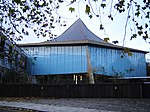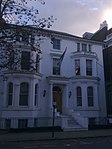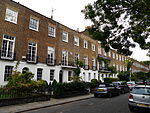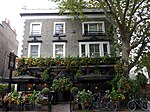Design Museum
1989 establishments in EnglandArt museums and galleries in LondonArt museums established in 1989British designCharities based in London ... and 5 more
Design museumsGrade II* listed buildings in the Royal Borough of Kensington and ChelseaGrade II* listed museum buildingsMuseums in the Royal Borough of Kensington and ChelseaUse British English from January 2020

The Design Museum in Kensington, London exhibits product, industrial, graphic, fashion, and architectural design. In 2018, the museum won the European Museum of the Year Award. The museum operates as a registered charity, and all funds generated by ticket sales aid the museum in curating new exhibitions.
Excerpt from the Wikipedia article Design Museum (License: CC BY-SA 3.0, Authors, Images).Design Museum
Kensington High Street, London Earl's Court (Royal Borough of Kensington and Chelsea)
Geographical coordinates (GPS) Address Phone number Website External links Nearby Places Show on map
Geographical coordinates (GPS)
| Latitude | Longitude |
|---|---|
| N 51.4998973 ° | E -0.200244 ° |
Address
Design Museum
Kensington High Street 224-238
W8 6AG London, Earl's Court (Royal Borough of Kensington and Chelsea)
England, United Kingdom
Open on Google Maps











